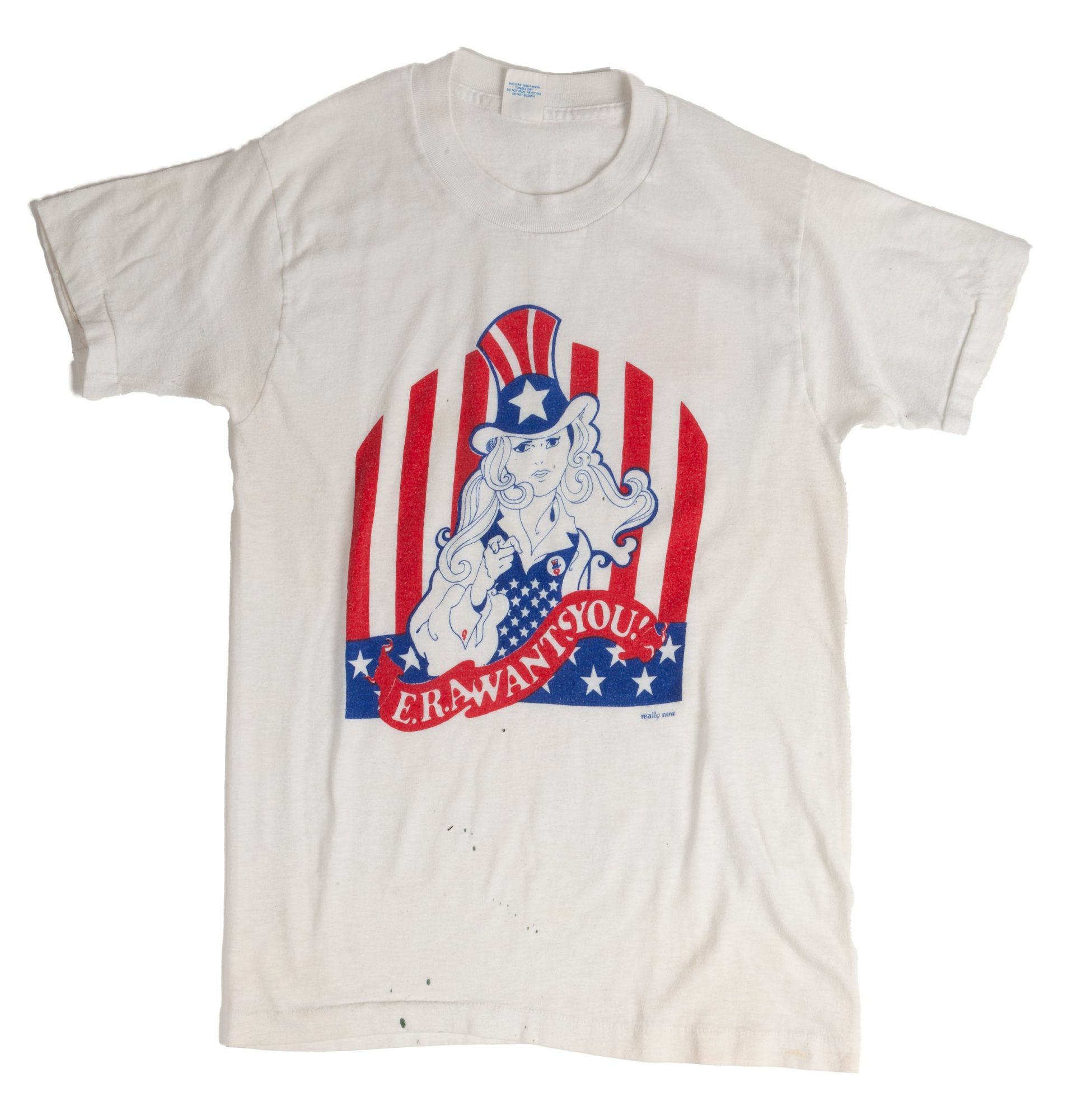
T-Shirt, 1972-82
Polyester and cotton
Gift of Eunice “Tootsie” Holland
2014.45.01
Less than five feet tall, Eunice “Tootsie” Holland looms large in South Carolina history. This t-shirt is one that she wore during the 1970s when fighting for the passage of the Equal Rights Amendment.
The Equal Rights Amendment
After the ratification of the 19th Amendment in 1920, prominent suffragist Alice Paul proposed what would become known as the Equal Rights Amendment (ERA): “Men and women shall have equal rights throughout the United States and every place subject to its jurisdiction.”
The ERA was introduced in Congress every year from 1923 until it passed in 1972 after substantial effort by the 1960s and ‘70s women’s movement. When the ERA was sent to the states for ratification, general consensus was that, due to heavy bipartisan support, it would pass quickly.
Many UofSC students were vocal in their support for this and other women’s rights issues. Female students joined organizations dedicated to equality, such as the National Organization for Women (NOW) whose main goal was to lobby for the ERA.
UofSC student Maureen O’Brian led Columbia NOW’s 1976 membership drive and emphasized the organization’s significant efforts through a “multi-phased strategy to lean on the legislature for a favorable floor vote on the ERA.” However, a conservative push reversed the momentum, and the ERA has never been ratified. As recently as 2019, two bills to ratify the ERA were introduced and failed to pass in the South Carolina House of Representatives.

Political Button, 1975
Metal and plastic
Gift of Mrs. Keller H. Bumgardner and Mrs. Janet Wedlock from the South Carolina Coalition for the ERA Papers
5.985
Abortion became legal in 1973, but making it legal did not necessarily increase access to having one. Proponents of “pro-choice,” also known as reproductive rights advocates, wore this button in support of keeping abortion legal. The coat hanger remains a symbol for the suffering of women whose only option was, and sometimes is, to perform illegal abortions on themselves using wire coat hangers, at-home chemical concoctions, or physical harm.
Our Bodies Our Selves
In the 1970s, women found new ways to control their bodies and their lives. Co-ed Vickie Eslinger convinced the university to house a hotline to answer questions about reproductive health in Russell House. In response to rising incidents of sexual assault, the university implemented a strict curfew for female students, angering those who felt they were being wrongly punished.
Many took action. Columbia’s NOW chapter, including UofSC students, created the Women’s Center, offering information and counseling on rape, divorce, abortion, and consciousness raising. Malissa Burnette, a two-time UofSC alumna, worked to change state laws to protect victims of violence. Graduate student Mary Ann Sens created the first rape kit and lobbied the governor to place them in hospitals across the state.
Alpha Phi Omega created an escort service to safely see female students’ home. This continues and has been expanded to provide safe evening rides to all students, faculty and staff. UofSC also created the Sexual Assault and Violence Intervention and Prevention program.
Yet, in 2017, UofSC student Laurryn Thomas said, “Understanding that a scarily vast number of girls and women have had to go through some sort of sexual victimization in their lives should open everyone’s eyes to the problems our society faces.”